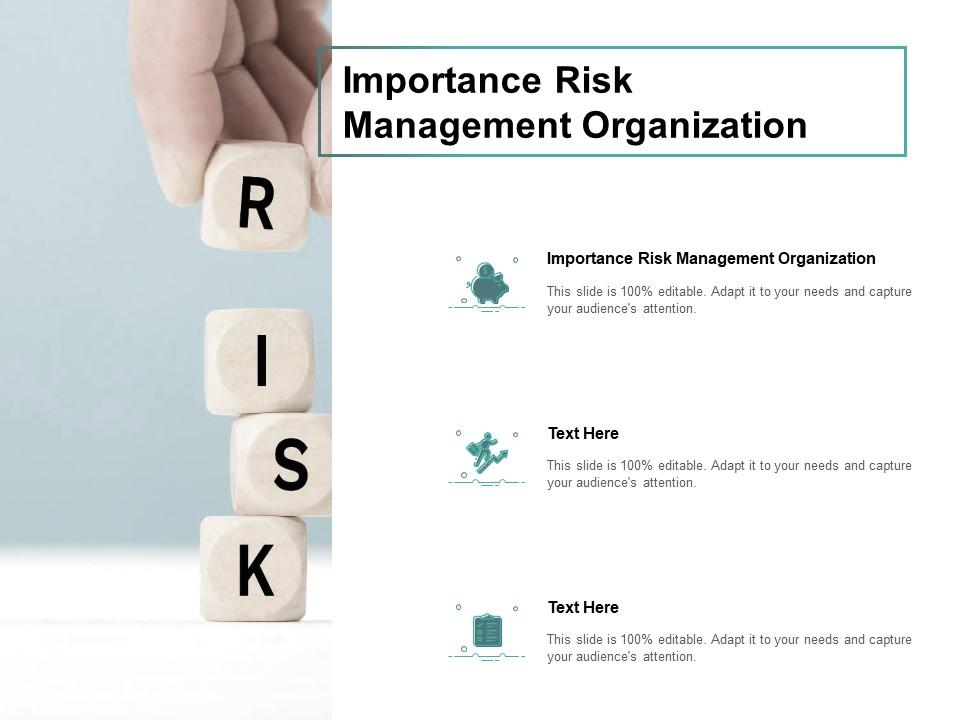Enhancing Company Efficiency Through the Importance of Risk Management
Enhancing Company Efficiency Through the Importance of Risk Management
Blog Article
Exploring the Relevance of Risk Management for Effective Decision-Making Methods
In the elaborate world of organization, Risk Management becomes a vital consider the decision-making process. The capability to identify possible dangers and possibilities, and strategize appropriately, can spell the difference in between success and failure. With devices such as SWOT and PESTEL, companies are furnished to make enlightened selections, fostering resilience and versatility in an ever-changing setting. Wondering how this works? Allow's unpack the dynamics additionally.
Comprehending the Principle of Risk Management
Risk Management, a crucial element in decision-making, is usually misinterpreted or oversimplified. Risk Management involves disciplined and organized strategies, using information and insightful assessments. From economic uncertainties, legal liabilities, tactical Management errors, to accidents and all-natural disasters, it deals with numerous threats - importance of risk management.
The Role of Risk Management in Decision-Making Processes
In the realm of critical planning and company operations, Risk Management plays an essential function in decision-making procedures. It assists in determining possible hazards and unpredictabilities that might affect the achievement of company objectives. By mapping these dangers, companies can develop methods to alleviate their impact, guaranteeing business connection and security. Risk Management thus comes to be a crucial tool in decision-making, helping leaders to make enlightened options based upon an extensive understanding of the threats entailed. It motivates an aggressive method, making it possible for companies to prepare and anticipate for feasible future situations. This substantially reduces the probability of unfavorable effects, advertising more effective and reliable decision-making approaches. Risk Management offers as a vital part in the decision-making processes of any organization.

Just How Risk Management Boosts Strategic Preparation
In the context of critical planning, Risk Management plays a crucial duty. Launching with the identification of potential risks, it better extends to the implementation of Risk reduction measures. The role of Risk Management is dynamic but not fixed, as it requires continuous surveillance and adjusting of approaches.
Determining Prospective Dangers

Executing Risk Reduction
Risk reduction strategies can range from Risk evasion, Risk transfer, to risk decrease. Each technique must be tailored to the certain Risk, considering its possible influence and the organization's Risk tolerance. Reliable Risk reduction calls for a deep understanding of the Risk landscape and the prospective effect of each Risk.
Surveillance and Changing Methods
Though Risk mitigation is a vital action in critical preparation, continual monitoring and adjustment of these strategies is just as vital. It also gives a chance to review the success of the Risk Management actions, allowing changes to be made where essential, more improving critical preparation. Monitoring and changing Risk Management approaches is a critical part for improving an organization's strength and calculated planning.
Case Researches: Effective Risk Management and Decision-Making
In the world of organization and financing, effective Risk Management and decision-making typically serve as the pillars of prosperous business. These instances highlight the value of astute Risk Management in decision-making processes. These situations emphasize the critical role of Risk Management in strategic decision-making.
Tools and Methods for Reliable Risk Management
Navigating the elaborate maze of Risk Management needs the appropriate set of methods and devices. These devices, such as Risk signs up and warmth maps, help in recognizing and assessing potential threats. Methods include both measurable methods, like level of sensitivity analysis, and qualitative approaches, such as SWOT evaluation. These help in prioritizing why not check here threats based on their prospective influence and possibility. Risk response approaches, a vital component of Risk Management, involve accepting, preventing, transferring, or mitigating risks. Surveillance and regulating threats, with normal audits and testimonials, make sure that the methods continue to be reliable. With these tools and techniques, decision-makers can navigate the complex landscape of Risk Management, consequently promoting educated and reliable decision-making.
Future Fads in Risk Management and Decision-Making Strategies
As we explore the vast landscape of Risk Management, it comes to be evident that the devices and methods used today will continue to progress. The concept of Risk culture, where every participant of an organization is conscious and involved in Risk Management, will certainly gain much more prominence. These patterns advertise a more inclusive and proactive technique in the direction of Risk Management and decision-making.
Final thought

Risk Management thus ends up being a crucial device in decision-making, helping leaders to make enlightened options based on a detailed understanding of the risks entailed. Risk reduction approaches can vary from Risk avoidance, Risk transfer, to risk decrease (importance of risk management). Reliable Risk reduction needs a deep understanding of the Risk landscape and the prospective effect helpful hints of each Risk. Risk feedback techniques, a vital component of Risk Management, entail accepting, avoiding, moving, or mitigating threats. The concept of Risk culture, where every participant of a company is aware and entailed in Risk Management, will certainly gain more importance
Report this page